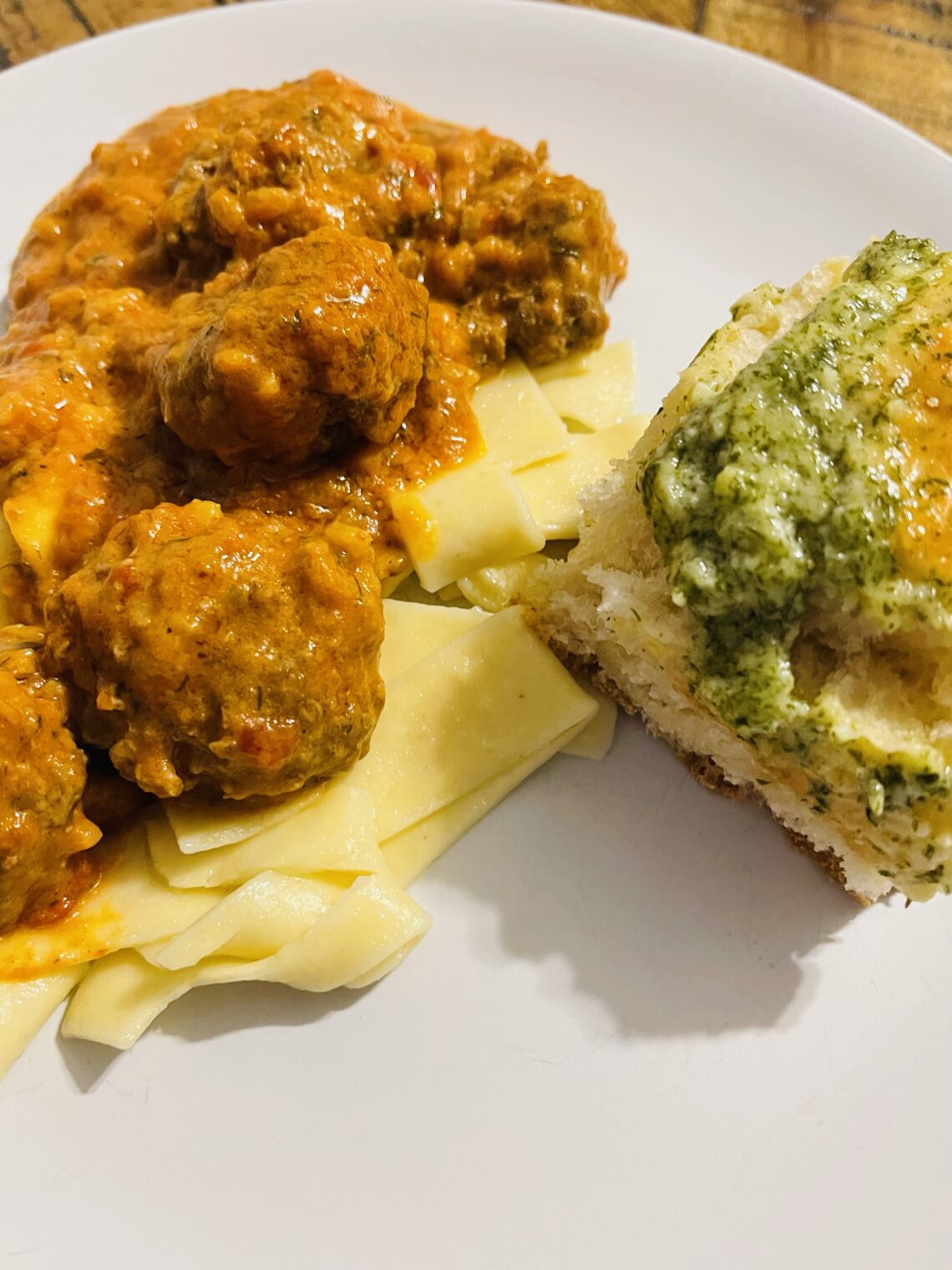
How to talk to your kids about Ukraine: a homeschool lesson plan
FTC Disclosure: This site contains affiliate links and advertising. I may receive a small compensation if you click them. This helps support my work. I am not paid by every brand, and I do not recommend brands without first trying their products. For more about affiliate links, visit ftc.gov.
Author’s note: In order to keep the focus on Ukraine, I have not manually added affiliate links to this post. This is the donation link for the GlobalGiving Ukraine Crisis Relief Fund. Please consider supporting them. Thank you.
One thing that new readers might not know about us is that my husband and I are both homeschool graduates. Between the two of us, we had vastly different experiences, but one thing our families agree on is that children should be given a baseline understanding of local and world events. Right now, there is no more significant global event in our national conversation than Russia’s invasion of Ukraine, so we believe it’s imperative to talk to kids about Ukraine, too.
As homeschoolers, we were taught to build homeschool lesson frameworks and knowledge connections around anything we saw or attempted to do. This means connecting activities to bookwork concepts. Homeschoolers can find math lessons in carpentry and baking; art, engineering, and design lessons in cake decorating and LEGO structures; and even spiritual lessons in martial arts and community volunteering.
Because we were foster parents first, we did not initially prioritize this pattern of homeschool lesson plan building with our own children, although, like virtually everyone else, we’ve had our share of distance education time to fill because of the covid-19 pandemic. Now that we have finished adopting our kids and have more freedom to view homeschooling as our individual choice, we have decided that involving professional help is in their best interest. Some of our children have high academic needs that I am neither trained nor prepared to meet alone. We see value in educators, and in teacher specialization, so here on the Words Collide blog, I do not promote an anti-public school, anti-teacher mindset. We do not homeschool our kids presently, but we remain heavily connected with homeschooling families. However, we frequently deploy homeschool techniques to supplement or clarify the schoolwork our children do outside the home now.
Because the Ukraine crisis is top of mind for so many of us, I’m sharing part of my homeschool lesson plan for talking to kids about Ukraine today. In a broader context, this discussion should also demonstrate how homeschool parents and teachers can plan timely lessons in geography, history, social studies, language, international relations, and world events. Although we will be basing this conversation on what is happening in Ukraine right now, these homeschool lesson plan building tips are applicable to any subject.
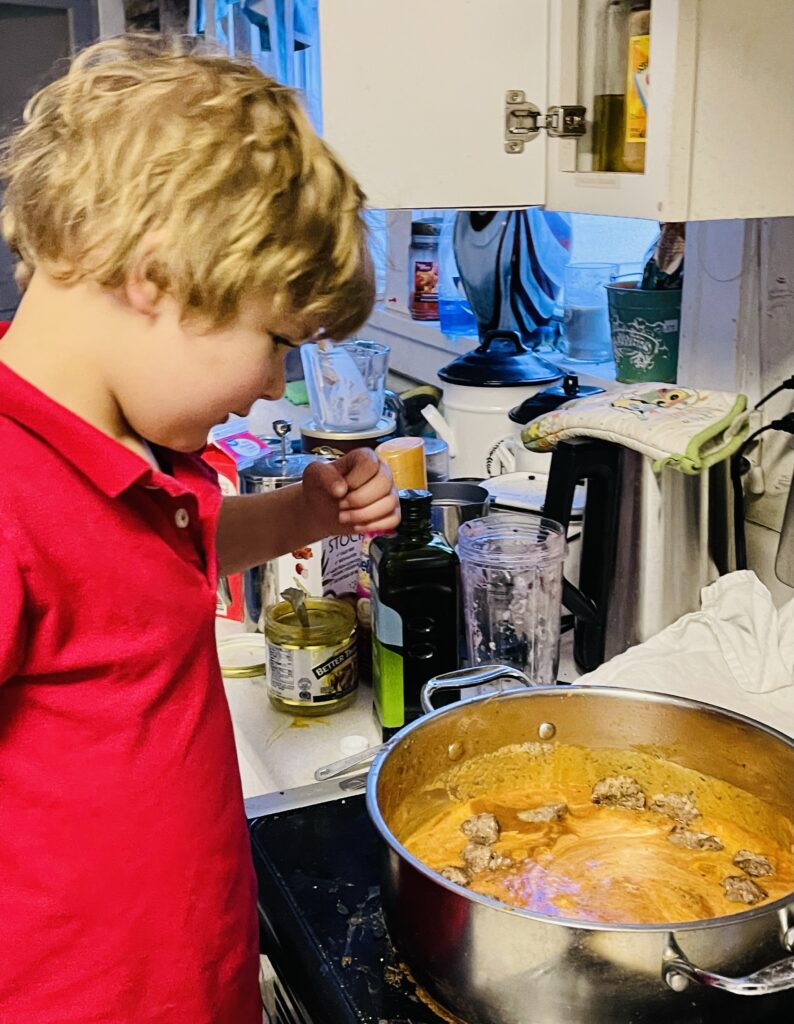
Cook culturally representative foods
Cooking, for me, is all about creativity and resourcefulness, and part of the deal when you have toddlers two years into a worldwide pandemic is adjusting on the fly because you absolutely do not want to drag everyone to the store. I can only imagine that Ukrainians are doing whatever they can with whatever they have in whatever safe locations they can find right now. We built part of our homeschool lesson plan for talking to kids about Ukraine around Ukrainian food, starting with tefteli (porcupine meatballs), but we didn’t do any special or extra shopping for it. Under the circumstances, ideas, key flavors, and methods took priority over ingredient purism.
For the tefteli, we used this base recipe, which, considering other Russian and Eastern European dishes I’ve made, seemed the most authentic. We used leftover, pre-cooked rice. Since we didn’t have any carrots, I used butternut squash puree to replicate their color and sweetness. After consulting several other recipes, I added Worcestershire to both sauce and meatballs. And since I was almost out of sour cream, I substituted heavy cream as suggested, which also helped prevent the sauce from separating (what little separation occurred was easily stirred back together smoothly). I didn’t have pork, so we used two pounds of organic farm-raised beef. To speed things up, I opted to bake the meatballs on cookie sheets in a preheated oven to brown instead of frying in batches. We didn’t have potatoes, which seem to be most traditional, so I put egg noodles on the side.
The sauce is velvety and rich, reminiscent of penne alla vodka, without the vodka and with different seasonings. (Don’t leave out the dill; it’s a signature note in Eastern European cooking. You can use dried like we did.) It was a hit with all of our kids, even the pickiest eaters. My spouse, garlic fiend that he is, fully appreciated garlicky-sauced pampushki as well–KidTheFourth, 3, and I made two pans and one disappeared.
While waiting for everything to finish cooking, we watched this episode of NBC Nightly News: Kids Edition, and then continued talking to our kids about Ukraine as a family over dinner.
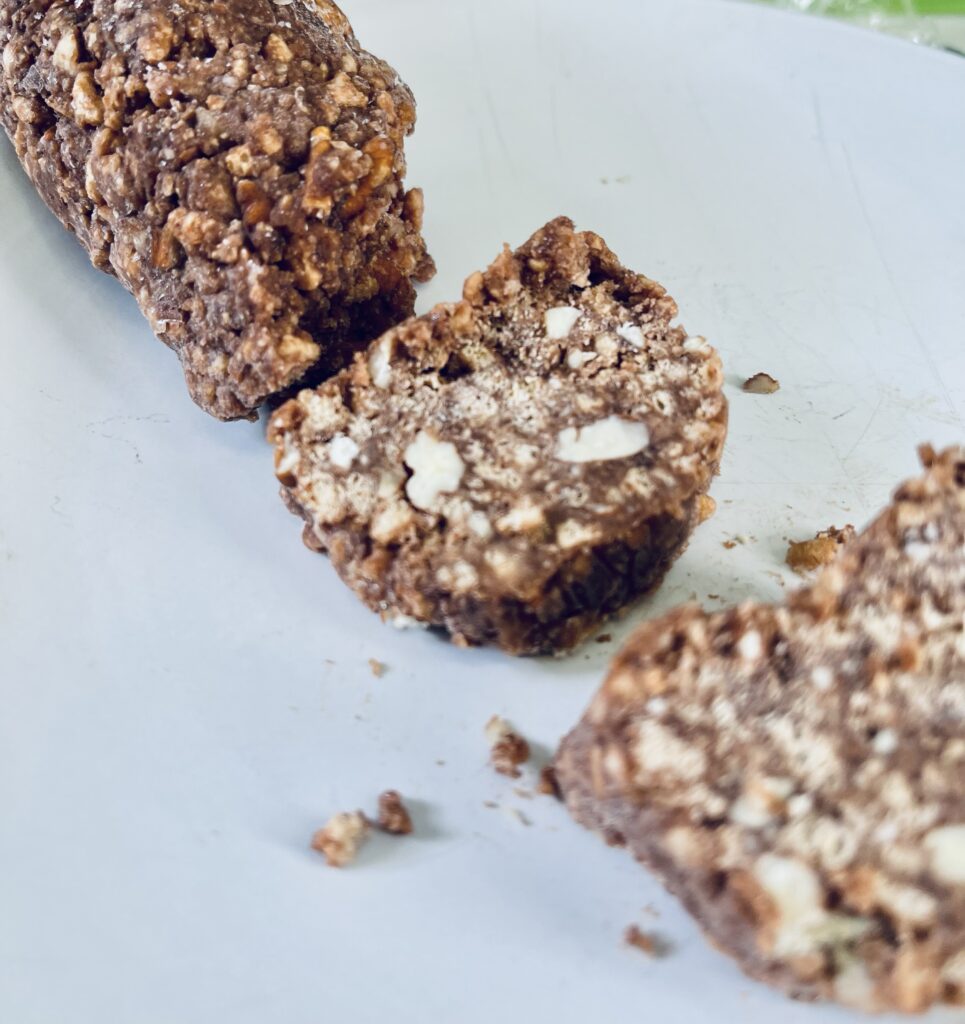
KidTheFourth and I also attempted a dessert popularly called “chocolate kielbasa” or “chocolate salami” that appears to be a staple confection in both Ukraine and Russia. (I believe the Russian name is shokoladnaya kalbaska; I am not certain of the Ukrainian term. We also found Italian recipes claiming the same dessert). Since I didn’t have Marie cookies (or digestives, or graham crackers), we swapped in Honey Nut Cheerios for the same cookie crumb effect (bonus if your household needs gluten-free ingredients), and I used Chambord as my liquor. The recipe I tried called for cocoa powder, but if we do it again, I would strongly suggest using one that calls for melted chocolate. I think, after further investigation, that this, and not heating the chocolate mixture, were key missteps in terms of achieving a smooth chocolate surface, although using cocoa would seem to still be an authentic technique. After freezing overnight, mine holds together well, slices with minimal crumbling, and has a texture similar to a Nestle Crunch bar, but less chocolatey. I don’t mind it, but KidTheFourth did not approve.
Have you tried, or will you try, any of these Ukrainian foods? Do you have a favorite Ukrainian dish to share? Feel free to share your insights and corrections in the comments section!
Try language practice
Straight up, I don’t know any Ukrainian. I grew up speaking a handful of Russian words and phrases, some of which I’ve previously shown my kids.
Thankfully, today we have the Internet, and as a quintessential millennial mother, I take full advantage of it for homeschool lesson plans.
First, you can point out to your kids that it’s not unusual for children in Europe to be raised multilingual. Show them this viral video of a journalist reporting on Ukraine in six languages.
Try learning some Ukrainian words together.
Sing the alphabet in Ukrainian.
Read a Ukrainian story.
Learn some of the ways Russian and Ukrainian are different!
Bring on the music and movement
Sing, dance, jiggle, and jangle to Ukrainian songs. Adding multisensory experiences to homeschool lesson plans helps with memory building and recognizes child learners’ auditory and kinetic memory needs.
“Vehicles Song”
Listen to Ukrainian nursery rhymes. Here’s one about berries.
Watch the hopak, a traditional Ukrainian dance. Then, practice it yourselves!
Make room for questions
The purpose of these lessons is not to carry on as normal, but to help children understand that Ukraine and Russia are both real places with real people–including other children–living there. This opens the door to explaining how what has been happening in their world may affect ours, and addressing their concerns in age-appropriate ways. It’s important to keep talking to kids about Ukraine and Russia after the formal lesson plan is over. Making space for talking to our kids about Ukraine has prompted some surprisingly savvy questions:
- “Why is Russia doing this?”
- “Why don’t we just stay out of it?”
- “Why don’t a lot of countries tell them to stop?”
- “How far away is Russia?”
- “How big is Russia? How big is Ukraine?”
Ultimately, our parenting philosophy prefers age-appropriate honesty over sugarcoating, so when we talk to our kids about Ukraine, we want to focus on telling them difficult truths in as calm and factual a way as we can. Talking to kids about Ukraine, and Russia, and our own country’s history of war, and using multi-sensory learning methods like those in my homeschool lesson plans to help them remember information later, is one way we can encourage empathy in the children we’re raising.
Today we’ve shared some of our homeschool lesson plan strategies for talking to your kids about Ukraine. What other ideas have you tried? Share in the comments!
You May Also Like
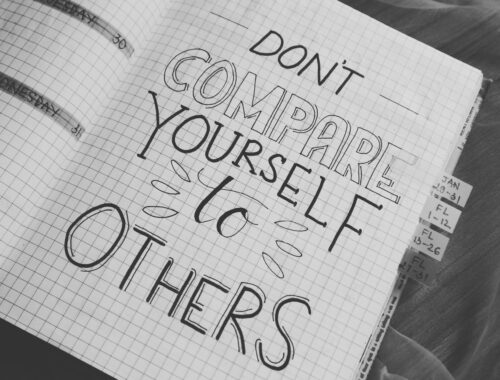
Feeling too frazzled to write? Just write one page
March 5, 2022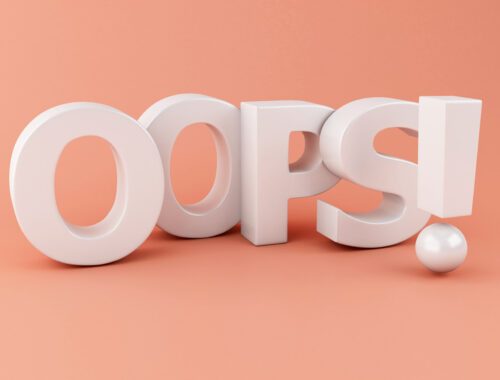
Y’all Need a Copy Editor: Chile verde isn’t red
January 29, 2022

